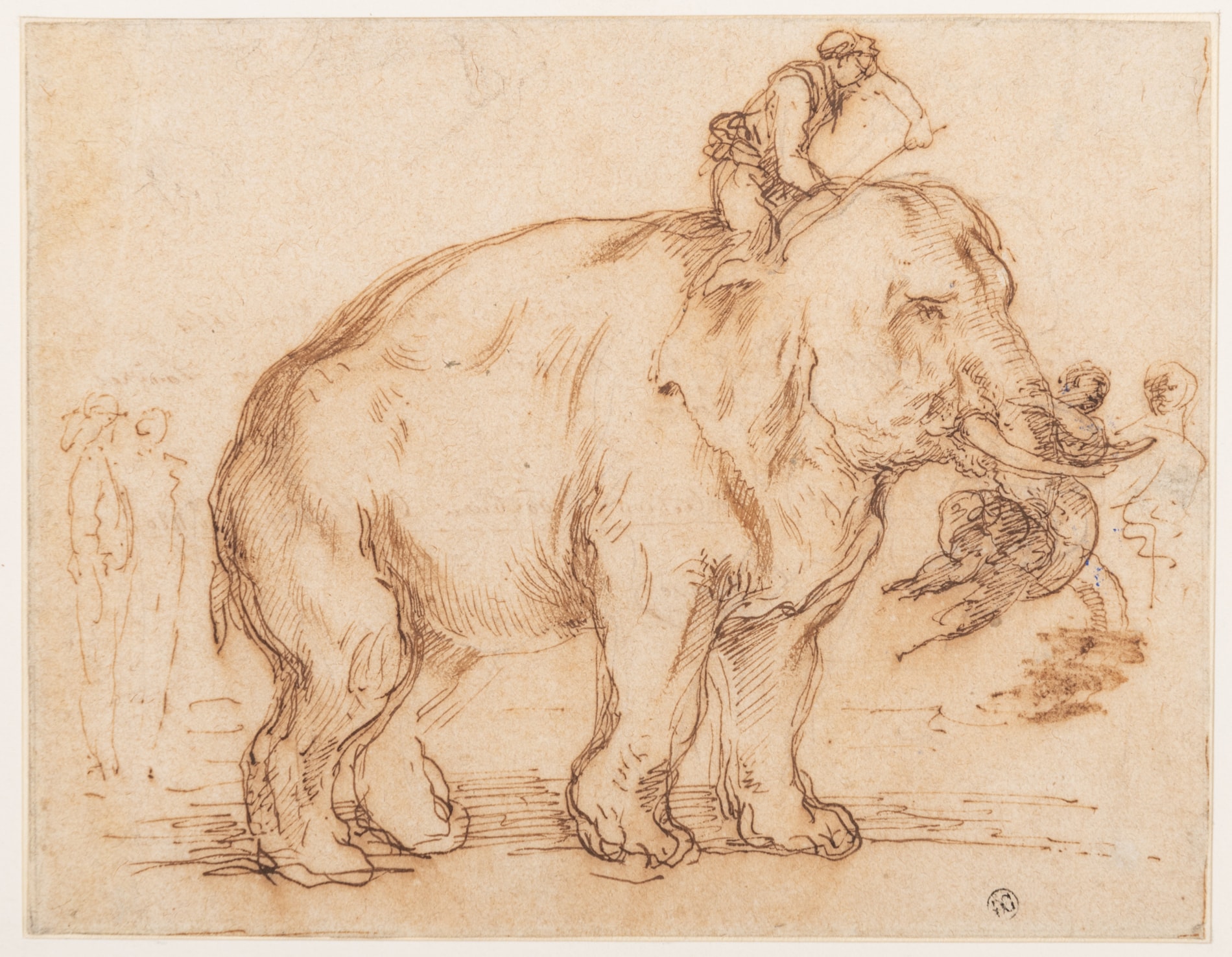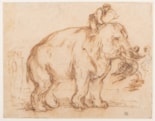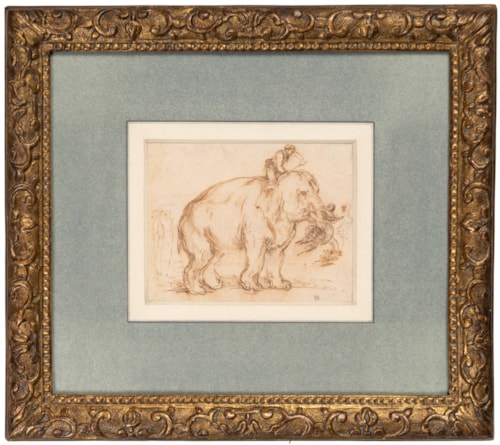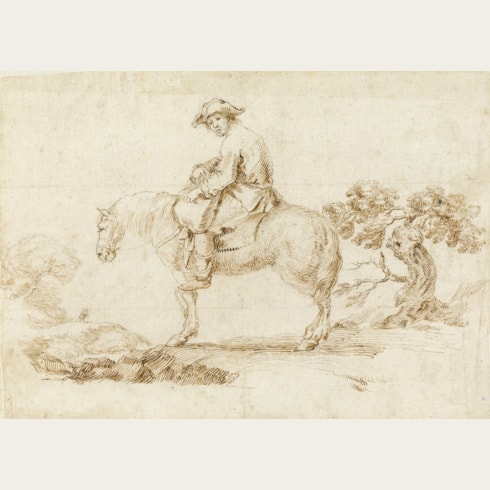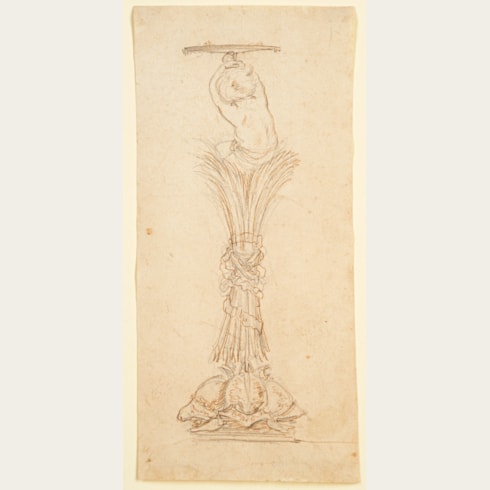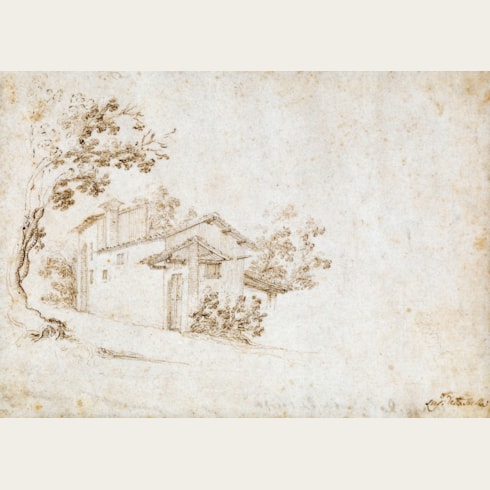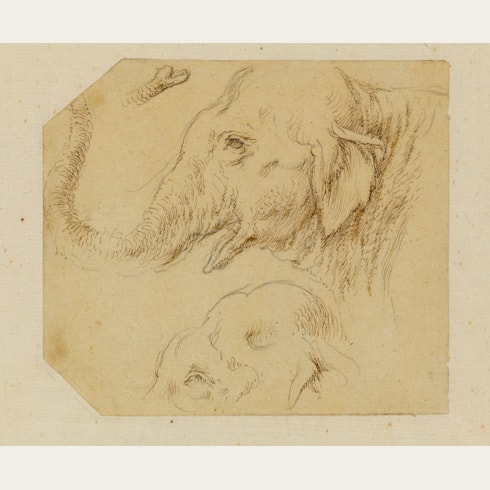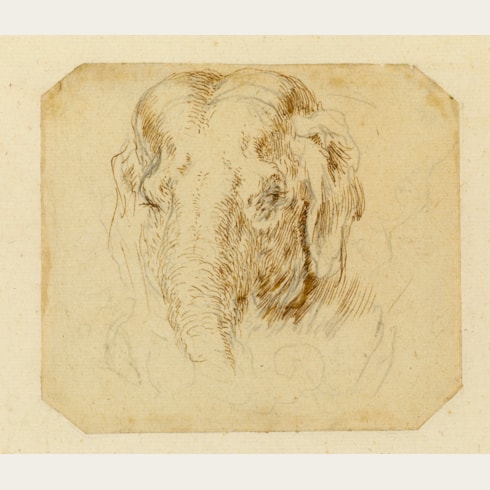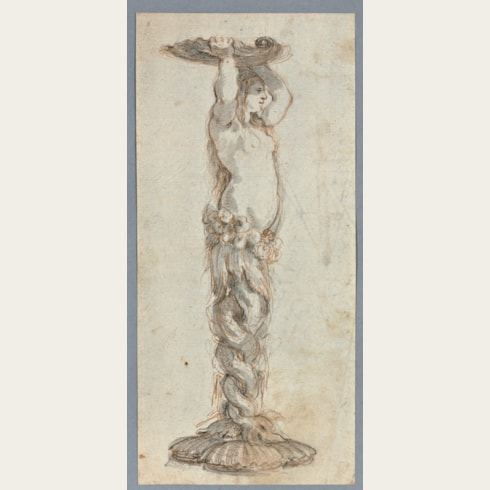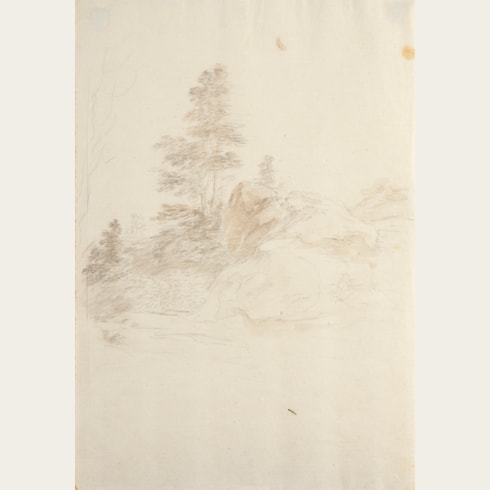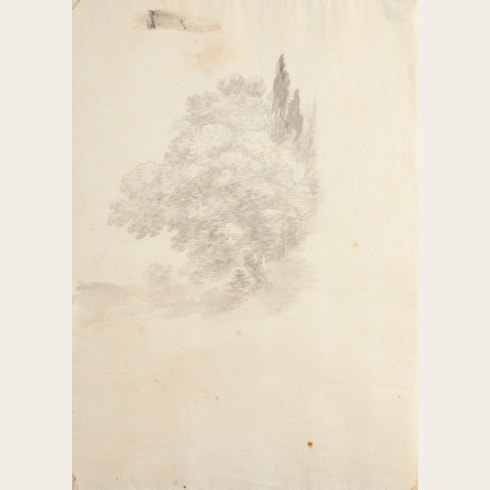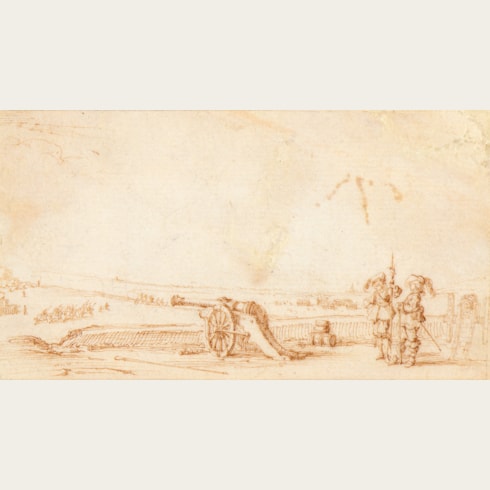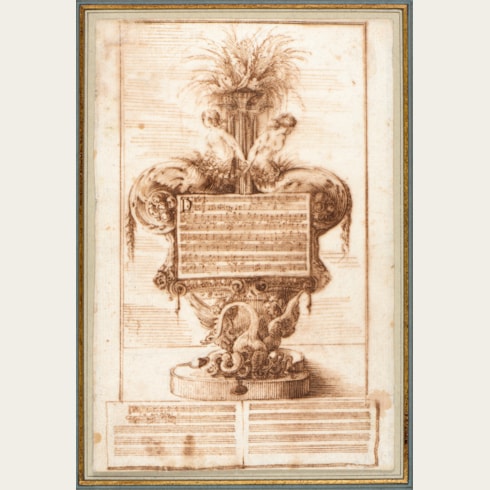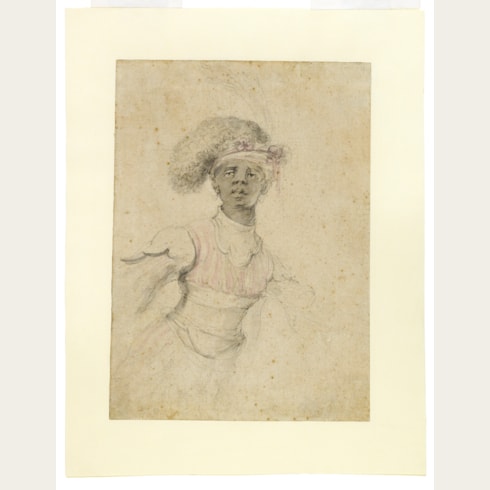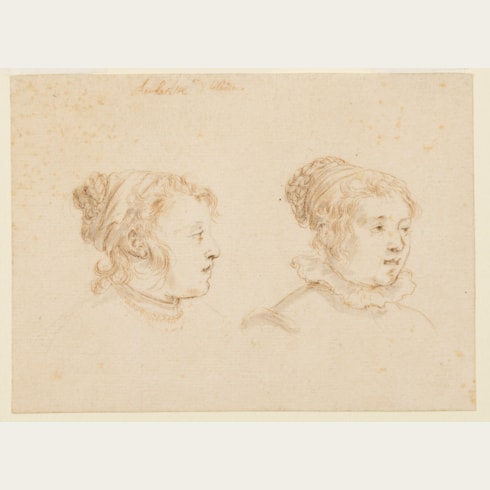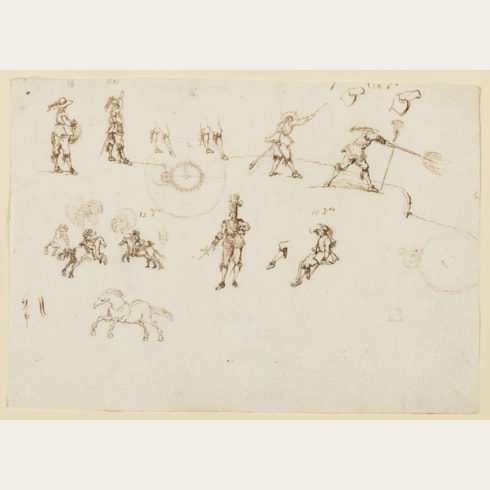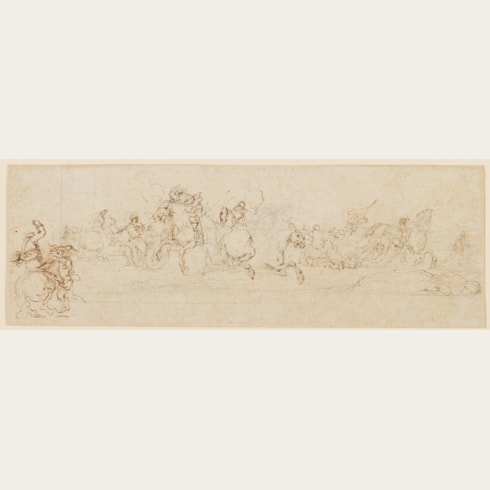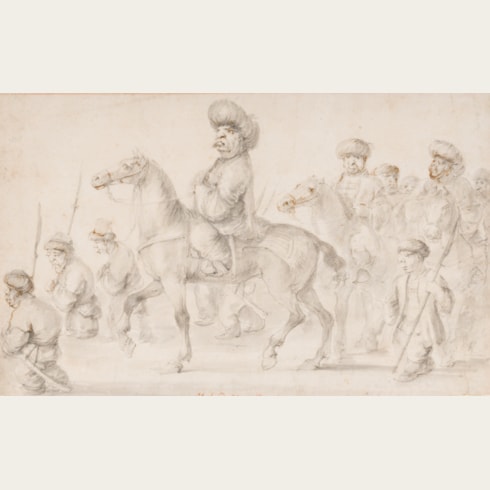Stefano DELLA BELLA
(Florence 1610 - Florence 1664)
An Elephant
Inscribed (by Gasc) 'Bella (Stephane della) ne el Florence en 1610 mort en 1664 / Dessin acheté 3 [?] le Mardi 12 juin 1860 à Londres / à la vente Woodburn / H = 0”,12 L = 0”,154 / (Collection Dijonval) (Collection Woodburn le Londres No.1120 / du catalogue) / C. Gasc' on the verso.
118 x 152 mm. (4 5/8 x 6 in.)
The elephant Hansken was depicted in a number of drawings by Rembrandt, drawn in Amsterdam in 1637, and in several studies by Stefano della Bella, who may have first seen the creature in Paris and possibly also later in Holland. Della Bella also made a number of drawings of Hansken at his death in Florence; one of these, inscribed and dated ‘Elefante morto in Firenze addi 9 di novembre 1655’, is now in the Biblioteca Reale in Turin, while two further studies of the same lifeless creature are in the Stadel Museum in Frankfurt. Another drawing of the elephant is in the Albertina in Vienna and one is in the Ashmolean Museum in Oxford; the latter is a preparatory study for an etching from the series known as the Diversi capricci, published in Paris in the late 1640s. A handful of other studies of Hansken and his handlers were included in an important album of drawings by Stefano della Bella assembled by the 18th century English calligrapher Thomas Tomkins, which was eventually dispersed at auction in 1975.
According to a later owner of the present sheet, it was once part of the huge collection of prints and drawings assembled by the 18th century French collector Gilbert Paignon-Dijonval (1708-1792), amounting to some six thousand drawings and around 60,000 prints. The collection, which included a very large number of drawings and etchings by Della Bella, was inherited by Paignon-Dijonval’s grandson, Charles-Gilbert Morel de Vindé (1759-1842), who had the collection catalogued in 1810 before selling it en bloc to the English art dealer and collector Samuel Woodburn (1753-1853). Some years after Woodburn’s death, his descendants sold his collection of drawings in two auctions held in London in 1860.
The present sheet was one of several drawings acquired from the two Woodburn sales in 1860 by the French collector Charles Gasc (1818-after 1869), who seems to have begun collecting in the early 1840s. On the versos of many of the drawings in his collection, including the present sheet, Gasc added notes regarding the name of the artist, his dates, the dimensions of the sheet itself and the circumstances of its acquisition. Charles’s elder brother Paul-Emile Gasc was also a collector of drawings.
A gifted draughtsman and designer, Stefano della Bella was born into a family of artists. Apprenticed to a goldsmith, he later entered the workshop of the painter Giovanni Battista Vanni, and also received training in etching from Remigio Cantagallina. He came to be particularly influenced by the work of Jacques Callot, although it is unlikely that the two artists ever actually met. Della Bella’s first prints date to around 1627, and he eventually succeeded Callot as Medici court designer and printmaker, his commissions including etchings of public festivals, tournaments and banquets hosted by the Medici in Florence. Under the patronage of the Medici, Della Bella was sent in 1633 to Rome, where he made drawings after antique and Renaissance masters, landscapes and scenes of everyday life.
In 1639 he accompanied the Medici ambassador to the Parisian court of Louis XIII, and remained in France for ten years. Della Bella established a flourishing career in Paris, publishing numerous prints and obtaining significant commissions from Cardinals Richelieu and Mazarin, as well as other members of the court and the aristocracy. Indeed, the majority of his prints date from this fertile Parisian period, and include scenes of life at the French court. After his return to Florence in 1650, Della Bella continued to enjoy Medici patronage. Over the next few years he produced drawings of the gardens of the Medici villa at Pratolino, the port of Livorno and the Villa Medici in Rome, and also became the drawing master to the future Duke, Cosimo III. He was also active as a designer of costumes for the various pageants, masquerades and ballets of the Medici court. After suffering a stroke in 1661, Della Bella appears to have worked very little before his death three years later.
Only a handful of paintings by Della Bella survive to this day, and it is as a graphic artist that he is best known. A hugely talented and prolific printmaker and draughtsman, he produced works of considerable energy and inventiveness, with an oeuvre numbering over a thousand etchings, and many times more drawings and studies. Significant groups of drawings by Della Bella are today in several public collections, with around six hundred sheets in both the Uffizi and the Louvre, and approximately 150 drawings apiece in the Istituto Nazionale per la Grafica in Rome and the Royal Collection at Windsor Castle.
Provenance
Probably by descent to his grandson, Vicomte Charles-Gilbert Morel de Vindé, Paris
Sold with the rest of the Paignon-Dijonval collection of drawings to Samuel Woodburn, London, in 1816
Thence by descent
The posthumous Woodburn sale (‘The Remaining Portion of Ancient Drawings, The Property of the late Samuel Woodburn, Esq.’), London, Christie’s, 12 June 1860, part of lot 1120 (‘Bella (S. de la) – The adoration of the Magi; and numerous figures – minutely executed with the pen, 15’ (sold for £2)
Charles Gasc, Paris (Lugt 544)
Spink-Leger, London
Acquired from them in June 1999 by Philip Uzielli, London
By inheritance to Isabelle de Waldner de Freundstein
Thence by descent.

